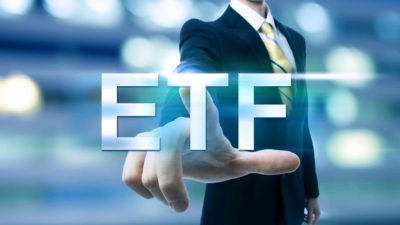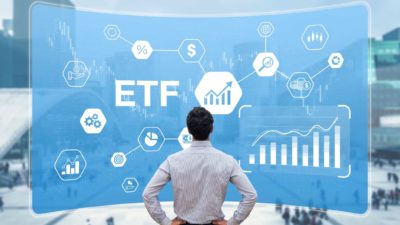It can be very overwhelming to decide which ASX exchange-traded fund (ETF) to buy.
With more than 250 ETFs listed on the ASX and counting, options are abundant.
So, here are a handful of things I weigh up when buying an ASX ETF.
ETF strategy
First things first, it helps to narrow down my investment universe. Usually, I'll have a particular type of ETF in mind.
For example, I might be searching for a growth-focused thematic ETF. So my options would include the likes of the BetaShares Global Cybersecurity ETF (ASX: HACK) or the VanEck Video Gaming and Esports ETF (ASX: ESPO).
Or perhaps I'm looking for broad-based exposure to the ASX share market. In this case, the BetaShares Australia 200 ETF (ASX: A200) and Vanguard Australian Shares Index ETF (ASX: VAS) would come into play.
In any case, it's important to understand an ETF's strategy and what it's designed to do.
I'll then consider how the ETF's strategy aligns with my investment objectives and tolerance for risk.
How it fits into my portfolio
When I'm weighing up a prospective ASX ETF, I'll also consider how it complements or overlaps what's already in my portfolio.
While there's no shortage of options for ETFs on the ASX, some are designed to do similar things.
For example, the A200 and VAS ETFs both provide exposure to ASX shares. The A200 tracks the S&P/ASX 200 Index (ASX: XJO) while VAS tracks the S&P/ASX 300 Index (ASX: XKO), so there's notable overlap.
But it's not just the overlap between ETFs that I'm conscious of. I'll also look into how a prospective ETF might overlap with my individual shares.
For example, the A200 and VAS ETFs are notably weighted to the big ASX banks. If I already held shares in, say, Commonwealth Bank of Australia (ASX: CBA) and Westpac Banking Corp (ASX: WBC) then I'd be getting even more exposure to the banks.
The ETF provider's website is always my go-to port of call for information. They'll have product pages for each of their ETFs, detailing a range of data including the individual holdings and weightings inside the ETF.
ETF fees
Next up we have management fees, which you'll also find on the ETF provider's website or the ASX directory.
It's very important to be mindful of fees because they can eat away at your investment returns, especially over a long period of time.
Take a $100,000 portfolio, for example, earning 7% a year for the next 25 years. If this portfolio incurred no fees, it'd grow to $540,000.
But add in annual fees of 2%, which effectively reduces annual returns to 5%, and this portfolio would stand at just $340,000. That's $200,000 in fees or nearly 40% of the portfolio's final value!
Just like investment returns, fees also compound. What may appear to be a trivial percentage fee can add up big time over many years.
So, when you're weighing up a prospective ETF, it pays to consider the fees. You can see how they compare to similar ETFs from other ETF providers.
Fees for a plain, index-tracking ETF are often less than 0.2% per year. Meanwhile, fees for a thematic ETF can sit around the 0.5% mark.
As a general rule of thumb, if I'm paying more than 0.5% I'd need to have a good reason for it. For example, perhaps the ETF provides targeted exposure to a niche market sector. Or perhaps it's actively trying to outperform the share market.
In saying all of this, fees make up only part of the research puzzle and I wouldn't overlook a better ETF simply because of slightly higher fees.
ETF size
Another metric worth paying attention to is the size of the ETF.
Though not nearly as important as fees, the size of an ETF tells you how much money is invested in it. And in turn, the potential likelihood of the provider closing down the ETF.
Remember, ETF providers make a dime by charging fees on the money invested in their ETFs. So, the less money invested, the less they make.
You'll find this information on the ETF issuer's website. It's often shown as net assets or assets under management (AUM).
An ETF closing down isn't the end of the world. If this were to happen, you'd likely be presented with some options, such as receiving the value of your units back in cash. But personally, it's something I prefer to avoid.
What's more, larger ETFs are typically more liquid. In other words, they usually have more buy and sell orders placed for them each day. This can reduce the gap between what a seller is asking and what a buyer is willing to pay, otherwise known as the 'buy-sell spread'.
Spreads are a hidden cost of investing and represent the price of entering and exiting a stock or ETF. The tighter the buy-sell spread, the better.
ETF performance
Last but not least we have performance. I should note that as they say, past performance is not a reliable indicator of future performance. But I think it's an important metric nonetheless.
When I'm assessing performance, I like to look at returns over multiple years. As we know, different ETFs will do well and not so well at different times.
When it comes to performance, it's worth noting how a particular ETF has performed against its benchmark. This is especially important for index-tracking ETFs because it shows how well an ETF is doing what it's designed to do.
It's also worth investigating how an ETF is performing against its peers. There'll likely be at least one ETF similar to the one I'm researching. And if there's not, I can still compare performance to other options I'm weighing up.
How I research ASX ETFs
So there you have it. Five of the things I zero in on when I'm researching new ASX ETFs to add to my portfolio.
Happy hunting!








